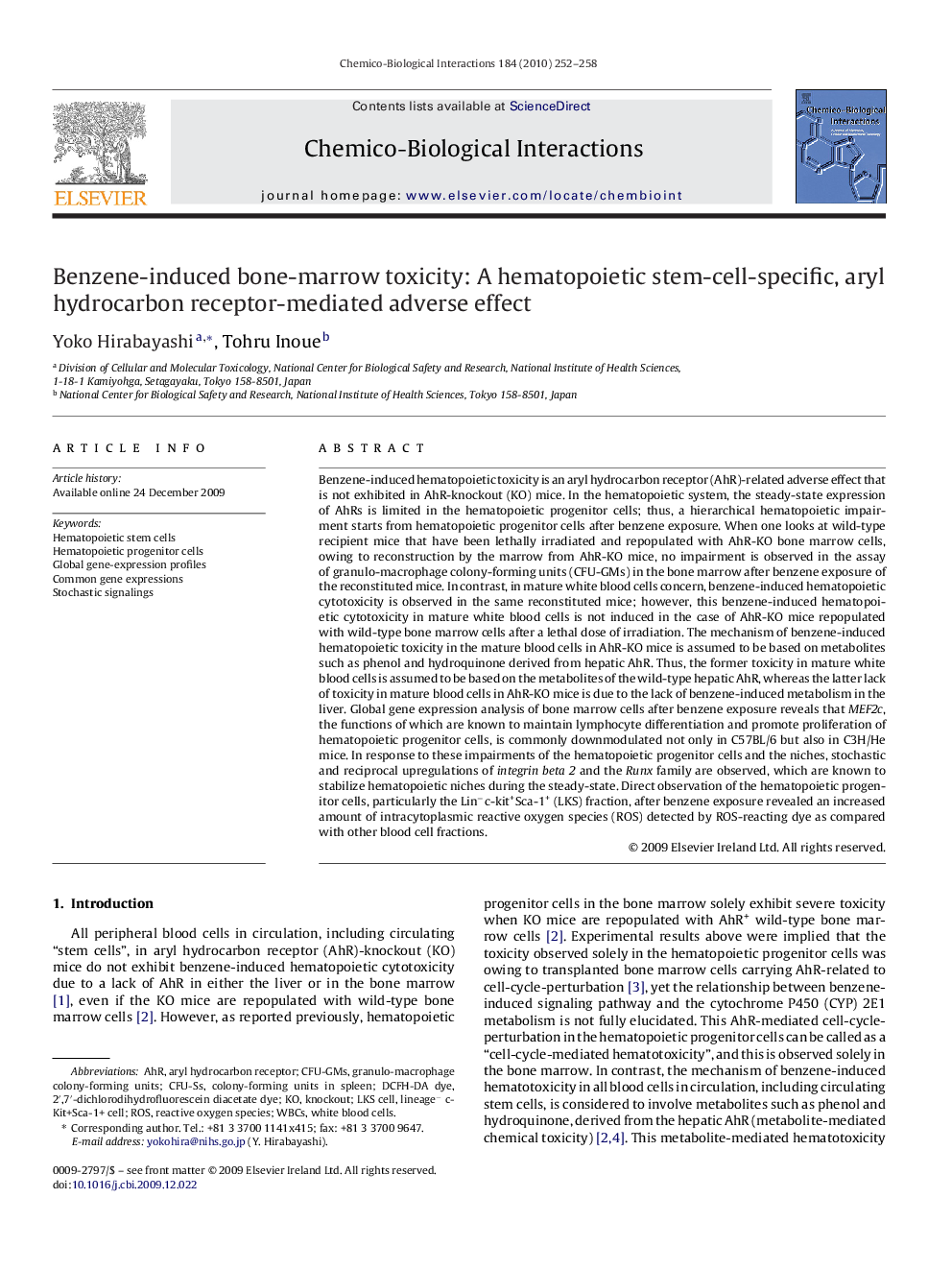| کد مقاله | کد نشریه | سال انتشار | مقاله انگلیسی | نسخه تمام متن |
|---|---|---|---|---|
| 2581158 | 1561647 | 2010 | 7 صفحه PDF | دانلود رایگان |

Benzene-induced hematopoietic toxicity is an aryl hydrocarbon receptor (AhR)-related adverse effect that is not exhibited in AhR-knockout (KO) mice. In the hematopoietic system, the steady-state expression of AhRs is limited in the hematopoietic progenitor cells; thus, a hierarchical hematopoietic impairment starts from hematopoietic progenitor cells after benzene exposure. When one looks at wild-type recipient mice that have been lethally irradiated and repopulated with AhR-KO bone marrow cells, owing to reconstruction by the marrow from AhR-KO mice, no impairment is observed in the assay of granulo-macrophage colony-forming units (CFU-GMs) in the bone marrow after benzene exposure of the reconstituted mice. In contrast, in mature white blood cells concern, benzene-induced hematopoietic cytotoxicity is observed in the same reconstituted mice; however, this benzene-induced hematopoietic cytotoxicity in mature white blood cells is not induced in the case of AhR-KO mice repopulated with wild-type bone marrow cells after a lethal dose of irradiation. The mechanism of benzene-induced hematopoietic toxicity in the mature blood cells in AhR-KO mice is assumed to be based on metabolites such as phenol and hydroquinone derived from hepatic AhR. Thus, the former toxicity in mature white blood cells is assumed to be based on the metabolites of the wild-type hepatic AhR, whereas the latter lack of toxicity in mature blood cells in AhR-KO mice is due to the lack of benzene-induced metabolism in the liver. Global gene expression analysis of bone marrow cells after benzene exposure reveals that MEF2c, the functions of which are known to maintain lymphocyte differentiation and promote proliferation of hematopoietic progenitor cells, is commonly downmodulated not only in C57BL/6 but also in C3H/He mice. In response to these impairments of the hematopoietic progenitor cells and the niches, stochastic and reciprocal upregulations of integrin beta 2 and the Runx family are observed, which are known to stabilize hematopoietic niches during the steady-state. Direct observation of the hematopoietic progenitor cells, particularly the Lin−c-kit+Sca-1+ (LKS) fraction, after benzene exposure revealed an increased amount of intracytoplasmic reactive oxygen species (ROS) detected by ROS-reacting dye as compared with other blood cell fractions.
Journal: Chemico-Biological Interactions - Volume 184, Issues 1–2, 19 March 2010, Pages 252–258